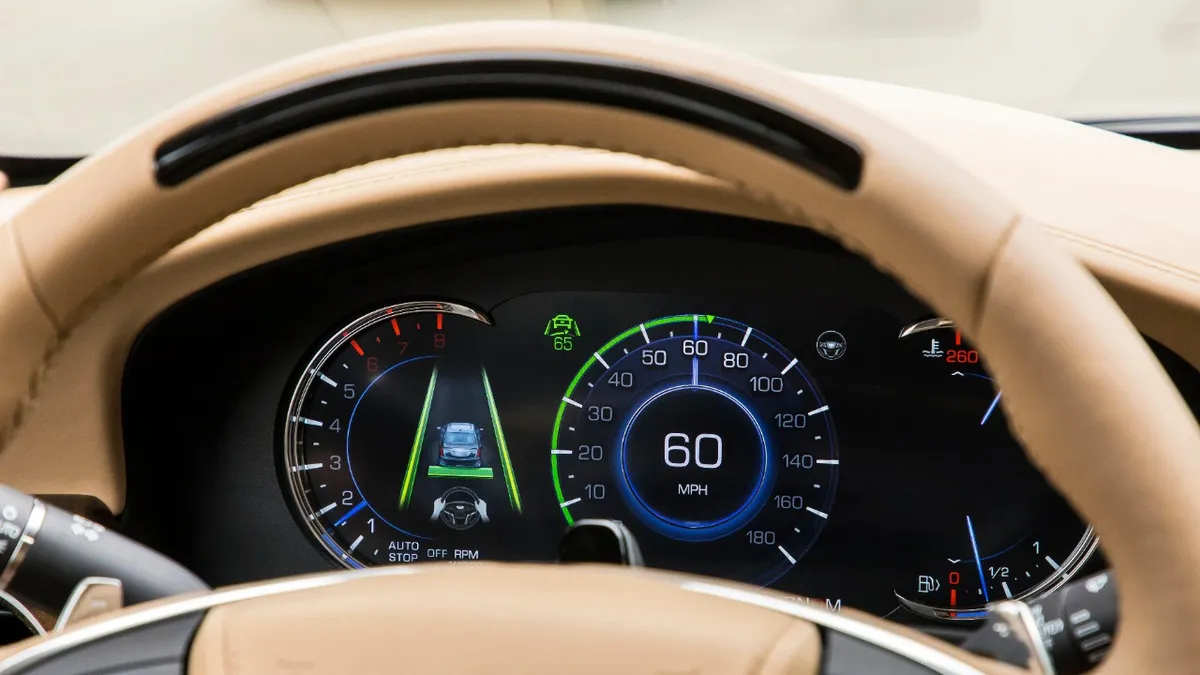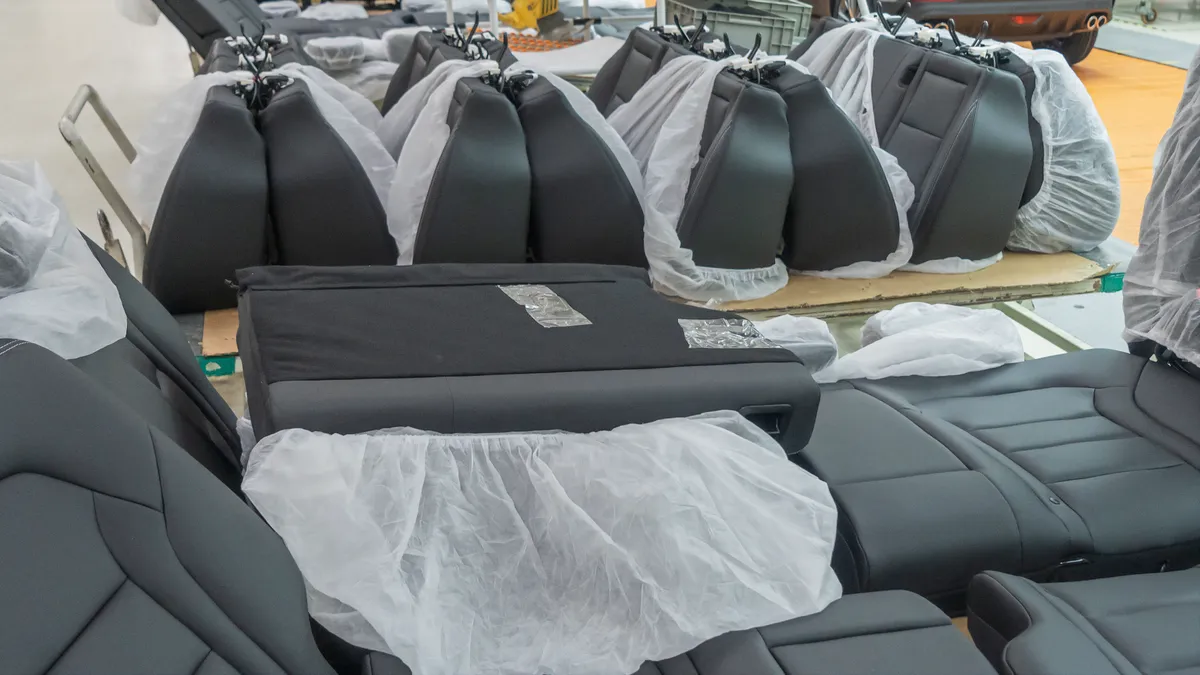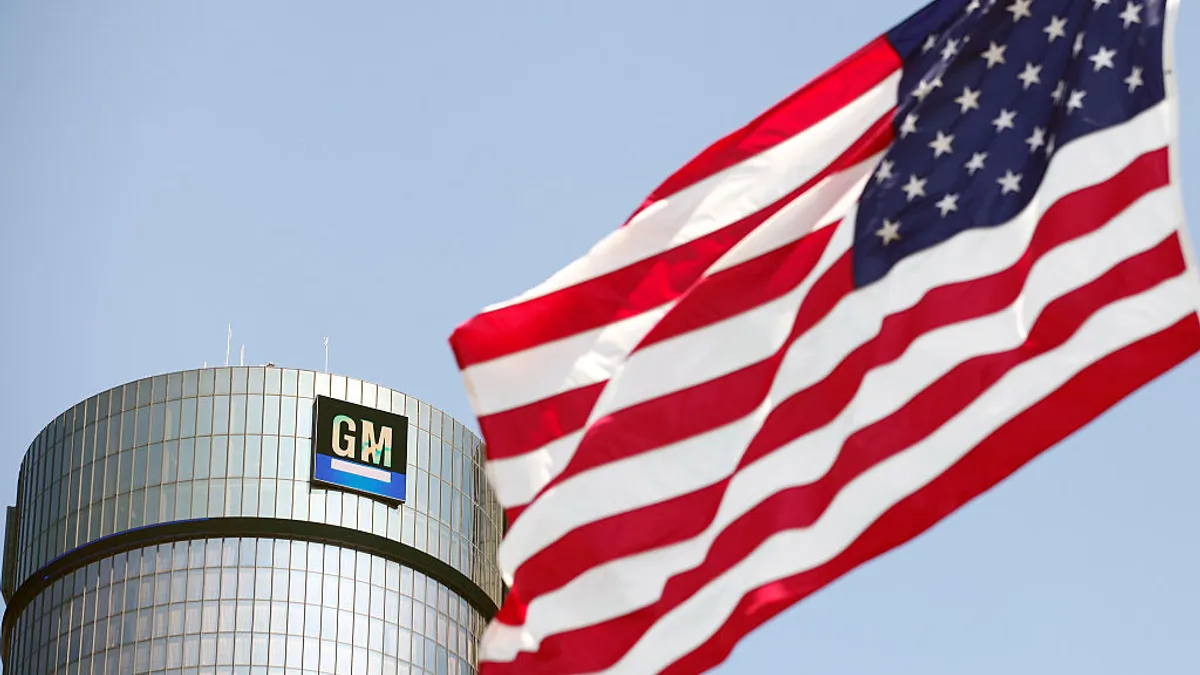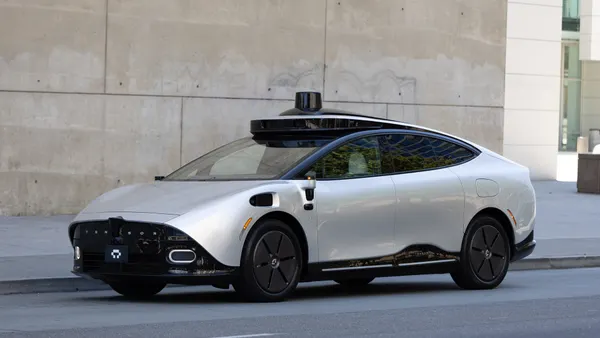Dive Brief:
- General Motors is launching a consumer education program to teach drivers about the safe use of advanced driver assistance systems, including its Super Cruise hands-free automated driving feature, the company said Friday.
- As GM prepares to offer automated driving capabilities on more models, the automaker’s new “Hands Free, Eyes On” program aims to increase usage and make drivers more comfortable using ADAS features.
- The driver education program may prevent some of the backlash that Tesla has faced surrounding its Autopilot and Full Self-Driving beta software, which some people mistakenly believe is capable of operating on its own.
Dive Insight:
GM’s driver education initiative aims to inform drivers about the current capabilities of automated driving features as they become more widely available across the automaker’s model lineup. GM said education and training are key to making drivers more comfortable using autonomous driving technologies.
The automaker will teach drivers the difference between active safety systems that require human supervision and fully autonomous technology that doesn’t require intervention.
As part of the program, GM will share free resources on its website and social media channels, including tips and best practices for using ADAS.
A March study by the American Automobile Association found that 68% of drivers are apprehensive about self-driving vehicles, up from 55% in 2022. AAA’s survey also reports that nearly one in 10 drivers believe they can buy a vehicle today that can drive itself, which is not true.
“We know that to help achieve our vision of zero crashes, we must increase the adoption of ADAS and proactively highlight the benefits they offer,” said Scott Miller, vice president of software-defined vehicle and operating system at GM. “To increase usage, we must help drivers understand how currently available technologies, like Super Cruise, work and the responsibility drivers have when using ADAS features.
The importance of human oversight of ADAS came to light earlier this year after Tesla was forced to recall nearly 363,000 vehicles after U.S. regulators said its Full Self-Driving beta software could allow vehicles to “travel through intersections in an unlawful or unpredictable manner” or “respond insufficiently to changes in posted speed limits.” Tesla’s Autopilot has been linked to 736 crashes in the U.S. since 2019.
GM’s Super Cruise automatically controls a vehicle’s acceleration and braking and maintains a preset distance from other vehicles to increase safety. The sensor suite uses cameras, GPS, lidar and detailed map data to steer the vehicle to make longer trips more comfortable, according to the automaker.
According to a 2023 study by the Insurance Institute for Highway Safety, Highway Loss Data Institute, vehicles equipped with automatic braking, for example, can reduce the chance of a front-to-rear collision by 50%.
For drivers unfamiliar with Super Cruise, GM recommends activating it in light traffic conditions when using it the first few times. GM also offers an online tutorial.
GM is also working on fully autonomous driving technology for its commercial robotaxi service operated by its subsidiary Cruise. The autonomous ride-hailing service, similar to Uber’s business model, is picking up riders in San Francisco in fully autonomous ride-hailing vehicles without human safety drivers onboard














